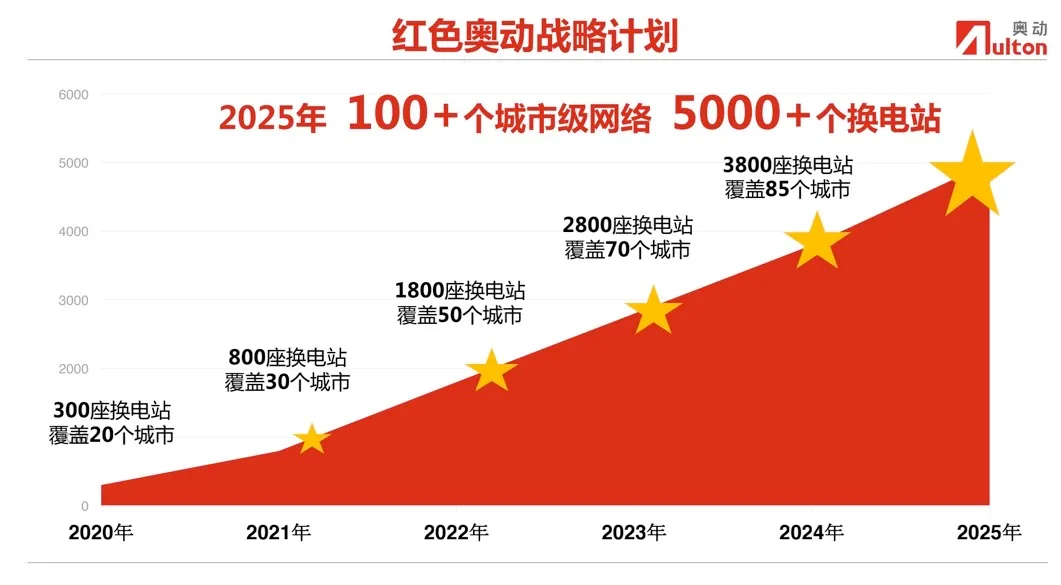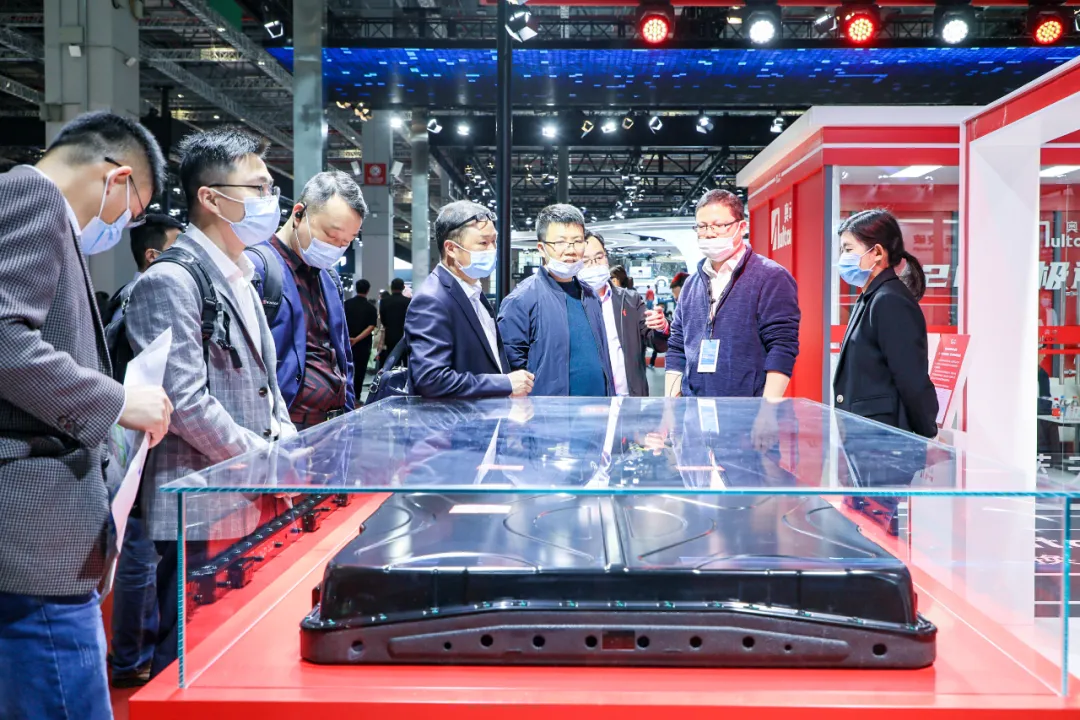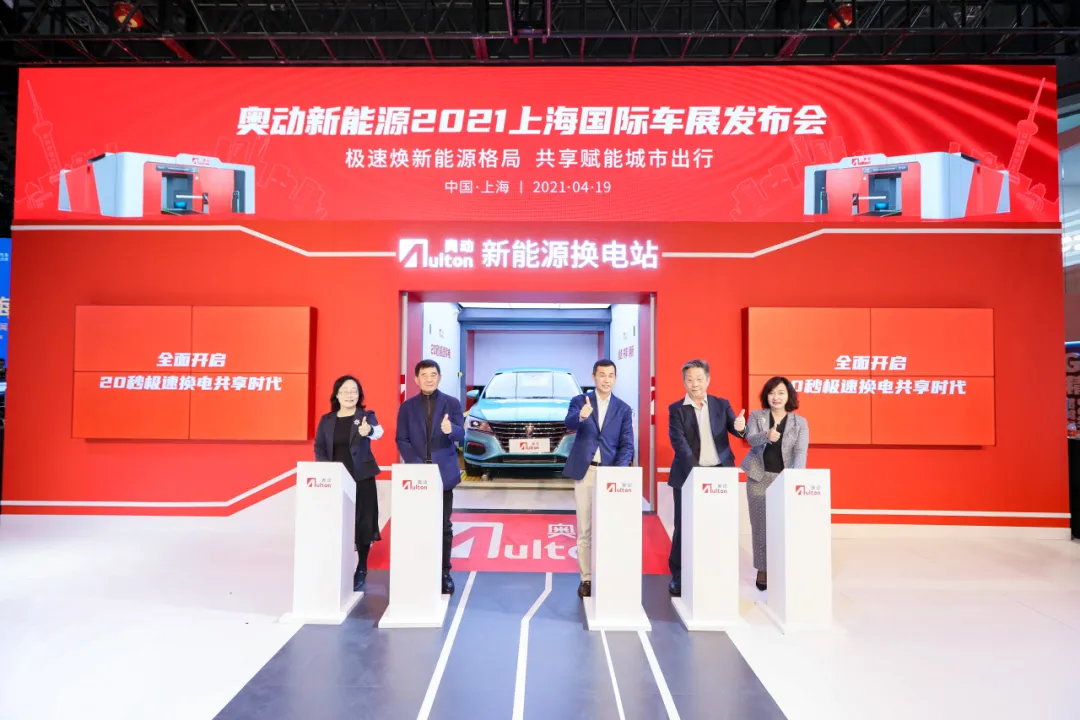Author: Huangshan
“We believe that multi-brand and multi-model shared battery exchange will become a trend.”
On April 19th, Zhang Jianping, co-chairman of Audong New Energy, threw out this opinion in an interview.
At the Shanghai Auto Show, Audong New Energy became the only battery exchange operation enterprise to enter the passenger car exhibition hall, bringing a live 20-second ultra-fast battery exchange demonstration and showcasing multi-brand and multi-model shared battery exchange technology through video.
At the scene, Huang Chunhua, the general manager of the brand and market center of Audong New Energy Group and the general manager of the East China region, also announced the “Red Audong Strategic Plan”. The goal by 2025 is:
-
Form a battery exchange service network for more than 100 cities.
-
Build more than 5,000 20-second ultra-fast battery exchange stations.
-
Build a multi-model shared battery exchange platform that can satisfy the battery exchange and energy supplement needs of more than 2 million new energy vehicles.

In a subsequent media interview, Zhang Jianping shared his future strategy for Audong. He believes that shared battery exchange achieves “compatibility between stations”, that is, a battery exchange station can provide battery exchange for multiple models, which will also promote Audong to enter the private battery exchange market. He said, “Next year, you can buy a car model that can be exchanged at Audong”.
Summary of 21 years of Experience
“Our definition of sharing is multi-brand and multi-model shared battery exchange. We do not specify the brand and specifications of the battery cells, as long as we unify the battery pack size and physical interface, we can achieve multi-model shared battery exchange services.”
When answering the questions about the compatibility between battery exchange stations and models, Zhang Jianping gave the above answer.

The promotion of the battery exchange mode has been difficult, and a major reason is the lack of universal compatibility. If the entire industry adopts the battery exchange mode, it requires matching of all electric vehicle designs and battery exchange stations, involving a long chain and multiple parties that require huge coordination and integration of resources.
If only a single model conducts battery exchange, there will be high investment costs, slow promotion, and the existence of the issue of low asset utilization if the service is limited to a single model. NIO is a special case, as its battery exchange aims to create an ultimate user experience. Other automakers find it difficult to afford such a large investment.
The feasible way is Audong New Energy’s shared battery exchange that has been explored for the past 21 years: unify the battery pack size and physical interface, and multi-model shared battery exchange can be achieved.
This plan avoids the burden of a single enterprise’s investment, spreads the cost, and helps the quick promotion of the battery exchange mode.# Zhang Jianping revealed that the relevant departments of the country are formulating standards for a unified battery pack for swapping. By the end of this year or early next year, the group standard is expected to be launched first. Then, according to different vehicle sizes, graded national standards will be introduced, and Oudong is also one of the drafting units.
Once the standard is established and the expectation of shared battery swapping is established, the long-standing problem of “which came first, the chicken or the egg” plaguing the industry will be solved. Once the shared battery swapping station is built, potential service customers will be much more than before.
True Separation of Vehicle and Battery is Not a Dream
If the battery swapping model has a development stage, the battery swapping station of NIO is at the 1.0 stage – the battery swapping station corresponds to each model and can only serve the own-branded models.
The 2.0 stage is to achieve “station compatibility” where different brands of cars can have battery swapping in the same station.
Eventually, the 3.0 stage is to achieve “car compatibility” where all cars have the same size of unified battery pack, making it possible for N models of cars to be adapted to one battery pack and achieve true battery swapping sharing. At this time, true “vehicle-battery separation” can be achieved.
Now, the “vehicle-battery separation” advocated in the industry is still in beta version, and consumers still need to hold batteries or pay battery rental fees.
For the model promoted by NIO, although users can choose to rent batteries, they also need to pay the battery rental fee every month and continue to pay until they sell the car.
Oudong is in the process of advancing from 2.0 to 3.0. Once “car compatibility” is achieved, users do not need to hold assets nor care which battery is being swapped, they only need to buy the desired car.
Oudong can provide users with payment for mileage, or provide rental packages, and users can pay as needed.
At this stage, the price of a car over RMB 100,000 can be directly reduced to within RMB 100,000 after removing the battery. Assuming the Roewe Ei5 as an example, the guide price for the 2021 model is RMB 139,800. Assuming a battery cost of RMB 70,000 for a 61-degree battery, the vehicle price would be only about RMB 70,000 after the battery is removed.
At present, Oudong’s battery swapping network has covered more than 20 cities nationwide, mainly serving rental and online-hailing cars. The “station compatibility” has already been achieved. Next, battery swapping will inevitably enter the private consumption market.
“Next year, you will be able to buy a car model that can swap batteries at Oudong,” Zhang Jianping replied when asked when it will enter the private battery swapping market.
Like a Gas Station But Not a Gas Station
“Although our battery swapping is mainly for B-side operating vehicles at present, the ultimate goal is to be like a gas station. Regardless of whether you are a B-side or C-side user, gas stations provide the same products and services. Similarly, battery swapping stations will provide energy,” Zhang Jianping said regarding the development positioning of the battery swapping station in the future.In his view, the core of battery swapping stations lies in energy management and service. First, it is important to manage the safety and lifespan of the batteries, with safety being about managing “thermal runaway” of the batteries. “With over 300 stations, we haven’t had a single accident, which is due to our management and monitoring of the batteries,” said Zhang Jianping. “Regarding lifespan, we manage the entire lifecycle, avoiding excessive charging and discharging.”
Secondly, the focus is on service. Once the battery is detached from the user, all they care about is how far the swapped battery can run. ODU provides good battery swapping services, just like refueling. Users have their preferred refueling stations where they get the job done in minutes, without worrying about fuel quality. Therefore, the battery swapping model does not need to change the user’s usage scenario or habits.
One thing that distinguishes battery swapping stations from gas stations is that gasoline is a disposable product and cannot be regenerated. In contrast, battery swapping stations manage the battery for its entire lifecycle, with full traceability of its usage. After a battery is retired, there is still residual value that can be utilized in stages in other areas.
The speed of building battery swapping stations will exceed expectations, according to Zhang Jianping. During the early stages of the auto show, ODU signed a strategic cooperation agreement with Sinopec, which will greatly improve the speed of building a nationwide battery swapping station network, further reducing swap usage costs and improving swapping efficiency.
As Zhang Jianping put it, “In the future, ODU’s construction speed will exceed everyone’s imagination, and we may be able to achieve our 2025 goal ahead of schedule.”
Huang Chunhua provided a specific number: “Since the release of the SAIC Roewe battery swapping car model on March 11th, ODU has already built 16 swapping stations in Shanghai, with orders for swapping vehicles exceeding 1,000. This year, we aim to have 50 operational swapping stations, serving 5,000 vehicles in Shanghai.”
In addition to grand objectives, the massive battery assets will also become a hot commodity. Zhang Jianping stated that battery asset liquidation is currently underway, with many partners communicating and collaborating with ODU.
For ODU, which has persisted in the battery swapping model for 21 years, it is now facing an unprecedented opportunity. This enterprise that has already completed the transformation from zero to one is eagerly seizing this opportunity to rapidly expand, transforming from one to ten, and then to one hundred.
This article is a translation by ChatGPT of a Chinese report from 42HOW. If you have any questions about it, please email bd@42how.com.
